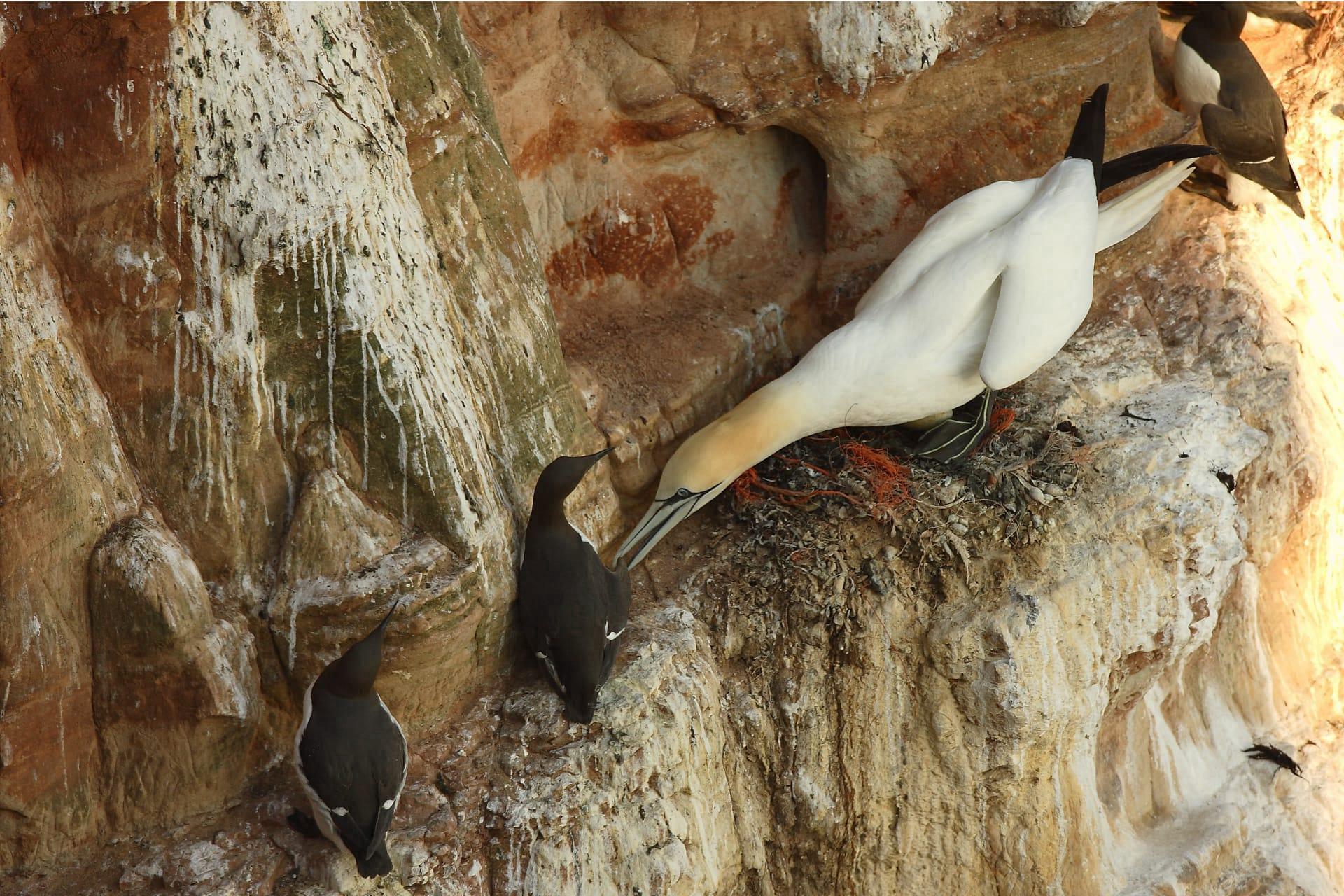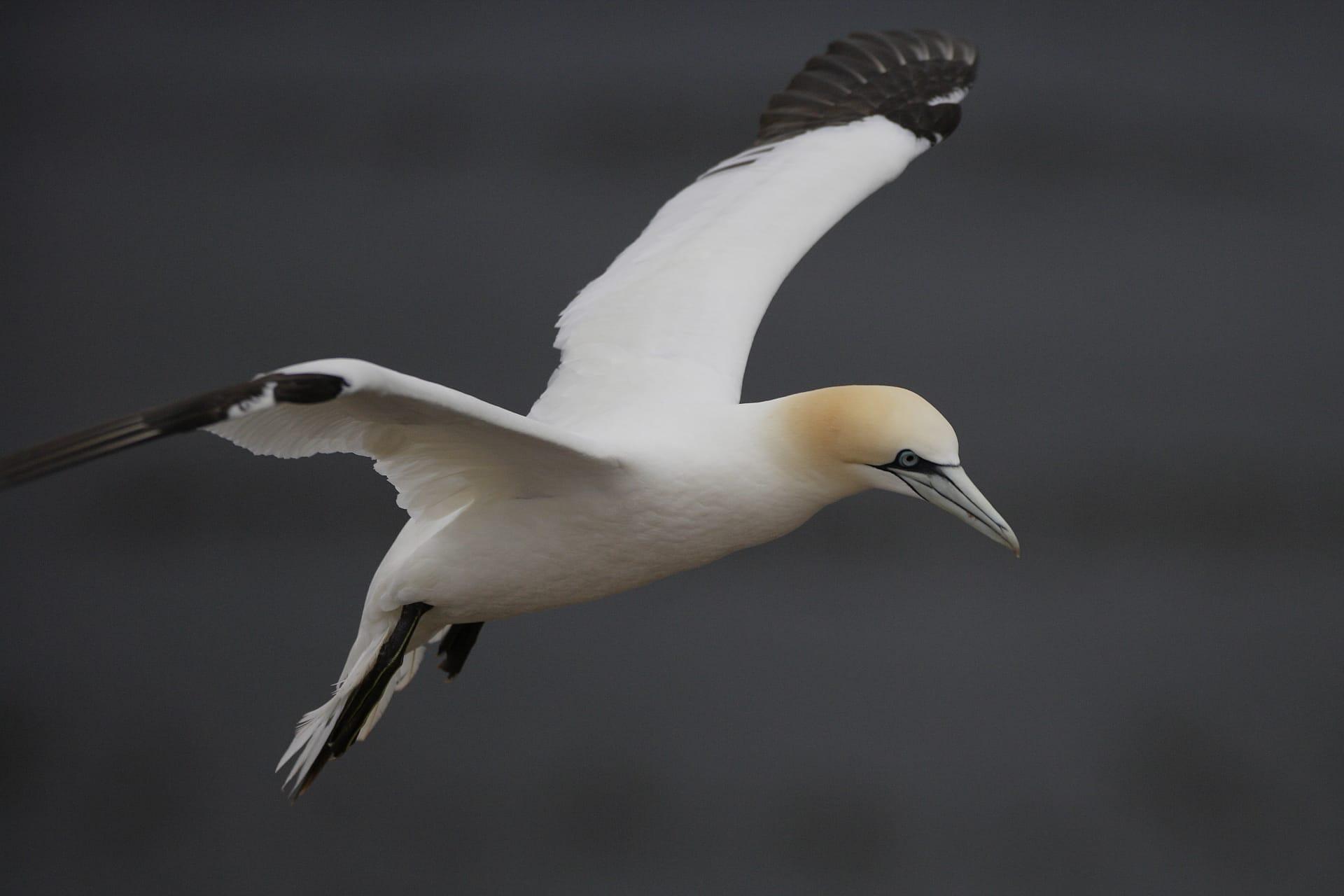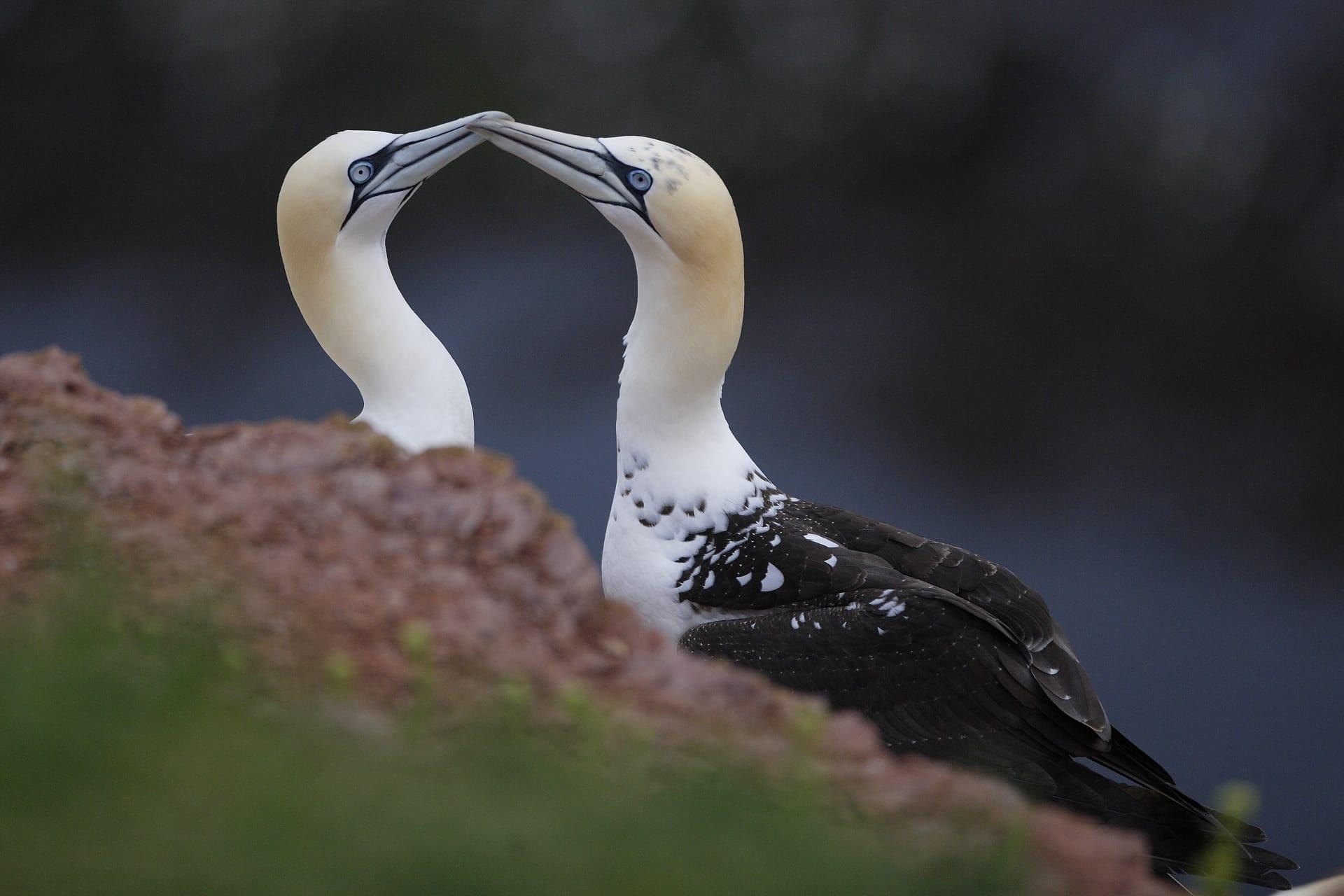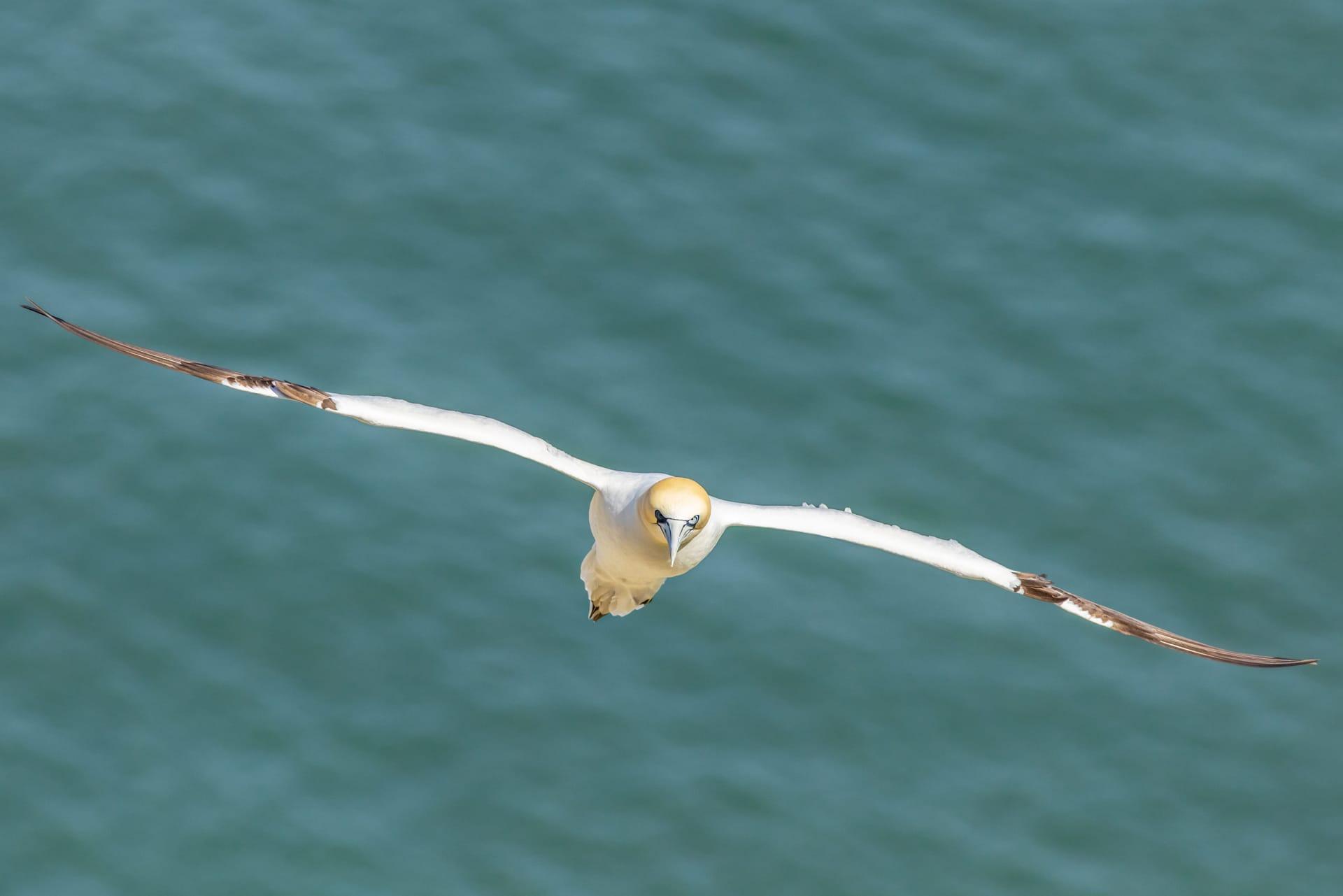Gannet Trivia
- Home /
- Trivia Question /
- Animal /
- Gannet Trivia
1
Question: How far can a gannet dive when hunting for food?
Answer: Gannets are phenomenal divers, capable of plunging from heights up to 100 feet (30 meters) into the ocean. They hit the water at speeds around 60 miles per hour (97 kilometers per hour), using their streamlined bodies and strong neck muscles to reduce impact and reach depths of up to 72 feet (22 meters) below the surface. This skill enables them to catch fast-moving fish like herring or mackerel.
Question: What is unique about a gannet's eyesight?
Answer: Gannets have remarkable eyesight adapted for their high-speed diving lifestyle. Their eyes are positioned forward, providing binocular vision, which is crucial for accurate depth perception. Moreover, they have specialized air sacs around their eyes and face, which help cushion the impact with water. This exceptional vision allows them to spot fish from great heights and judge distances precisely before executing their dive.

2
Question: Do gannets mate for life?
Answer: It's a common misconception that gannets mate for life. While they are largely monogamous during a breeding season, fidelity between seasons varies. Some pairs do stay together for many years, but changes in partners can occur, especially if breeding attempts fail. Their complex courtship rituals, involving bill-fencing and mutual preening, reinforce pair bonds each season.
Question: Can gannets fly long distances?
Answer: Many people underestimate the gannet's flying capabilities. These birds are built for endurance and can travel incredibly long distances. They routinely fly up to 300 miles (483 kilometers) a day in search of food. Gannets possess long, slender wings spanning up to 6 feet (1.8 meters), allowing them to glide effortlessly over the ocean, conserving energy during these extensive foraging trips.

3
Question: How do gannets nurture their young?
Answer: Gannet parents are highly attentive and nurturing. They take turns incubating the single egg with their webbed feet, keeping it warm. After hatching, the chick is fed regurgitated fish directly from the parents' beaks. For the first three months, the chick rapidly grows, gaining up to 6.6 pounds (3 kilograms), before it's ready to fledge and take its first flight.
Question: What is the lifespan of a gannet?
Answer: Gannets have a relatively long lifespan compared to other seabirds. They can live up to 25-40 years. However, their life expectancy depends on several factors, including food availability, environmental conditions, and threats like pollution or fishing nets. Young gannets face a high mortality rate in their first year but have a higher survival rate once they reach adulthood.

4
Question: How do gannets communicate with each other?
Answer: Gannets have a range of vocalizations and physical displays for communication. During breeding season, their loud, trumpeting calls can be heard over long distances. They also use body language, such as stretching their necks and spreading wings, to express dominance or attract mates. At sea, they may communicate more subtly, often through body postures and movements.
Question: What is the social structure of a gannet colony?
Answer: Gannet colonies are densely populated and highly social environments. They nest in close proximity, which helps in collective defense against predators. Despite this closeness, gannets are territorial about their nesting space. The social hierarchy is mainly established through display behaviors and vocalizations. In these colonies, information about food sources can be transmitted rapidly, aiding in their survival.

5
Question: What threats do gannets face in the wild?
Answer: Gannets face several threats, predominantly from human activities. These include oil spills, which can be lethal as oil damages their waterproofing, leading to hypothermia. Overfishing affects their food supply, and they often get entangled in fishing gear. Additionally, climate change impacts their breeding habitats and food availability, posing long-term threats to their populations.
Question: How efficient are gannets at hunting?
Answer: Gannets are extremely efficient hunters, with a success rate of around 40-60%. This high efficiency is due to their keen eyesight, precise diving skills, and ability to swim powerfully using their webbed feet. They can often be seen working in groups, which helps in herding fish and increases their chances of a successful hunt, showcasing their remarkable adaptation as marine predators.